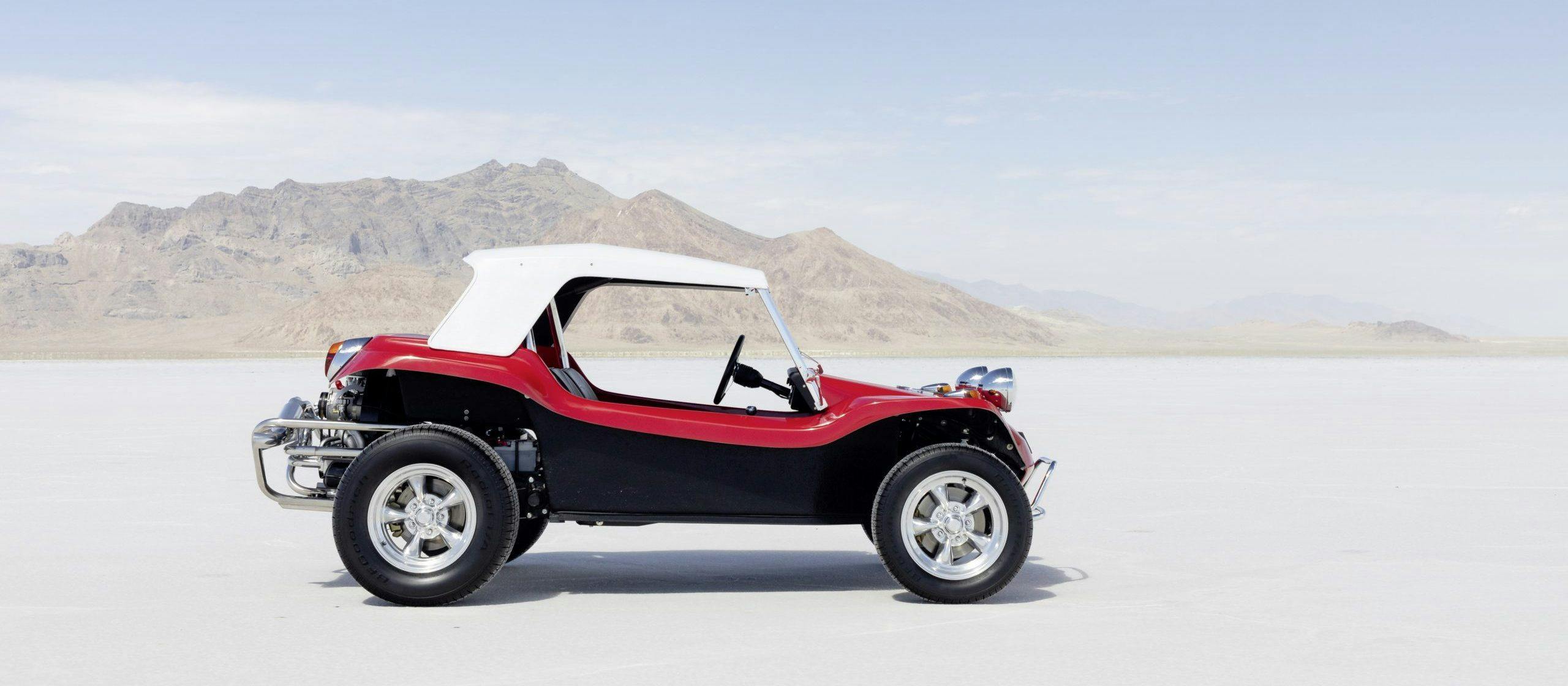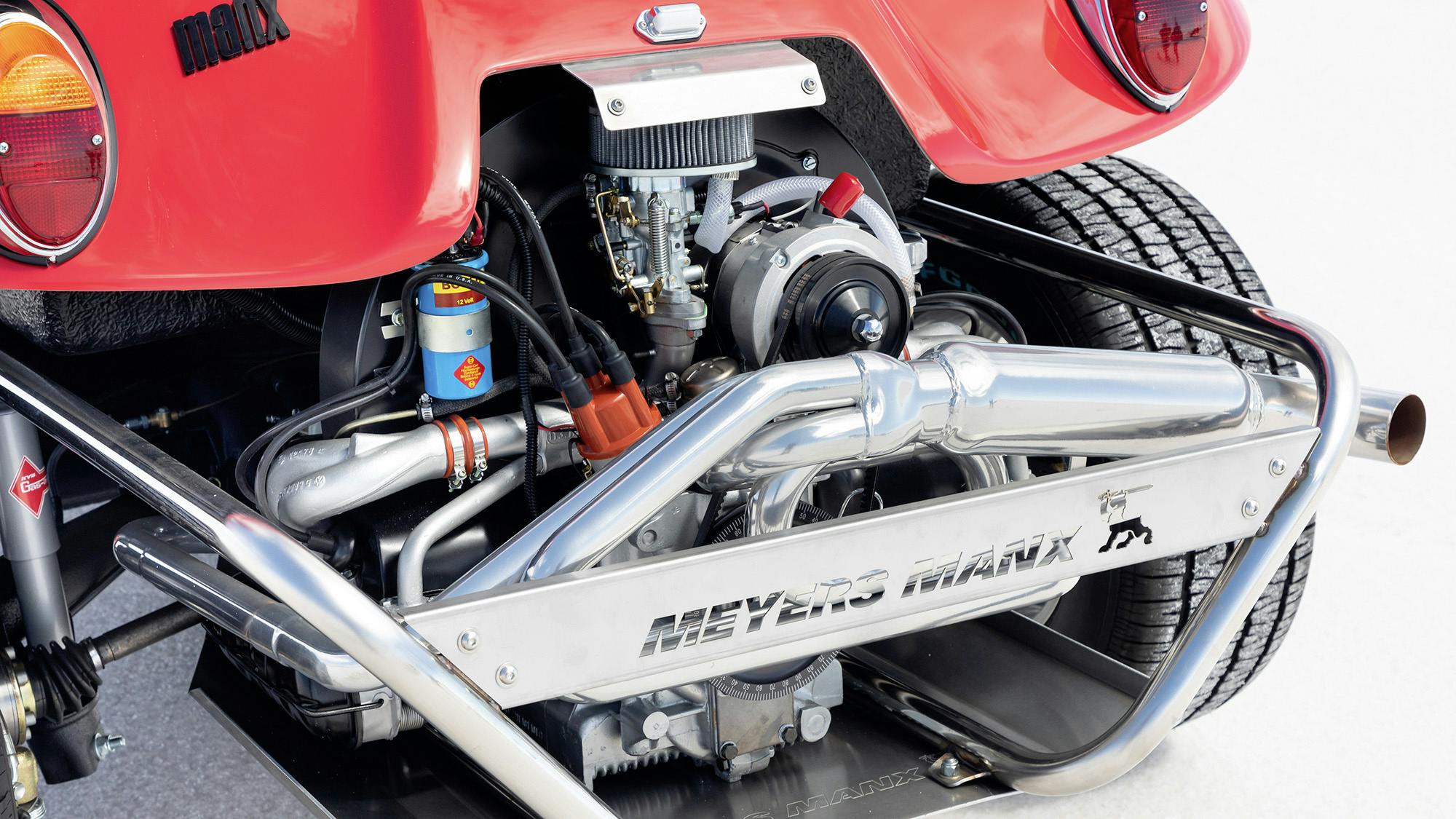Media | Articles
Bruce Meyers, creator of the iconic Meyers Manx, dies at 94
Bruce Meyers, who created the iconic Meyers Manx and is generally heralded as the inventor of the dune buggy—an accolade he insisted was not accurate—has passed away. He was 94.
Several sources reported Meyers’ death. He suffered from myelodysplasia, a blood disease similar to leukemia.
Although Meyers’ groundbreaking and legendary Manx became the benchmark for Baja racing and is essentially “the face” of dune buggy culture, he was adamant that it was simply an evolution of what came before it.
“I’ve been called the inventor of the dune buggy,” Manx told the Historic Vehicle Association in an episode of This Car Matters. “I’m not. I’m the inventor of the fiberglass dune buggy.”
Meyers trained at the at Chouinard Art Institute in Los Angeles, an education that in 1964 contributed to the creation of the Manx, which is essentially a Volkswagen Beetle with a shortened floor pan and a swoopy fiberglass roadster body.
Marketplace
Buy and sell classics with confidence
“As a little boy I loved the ‘funnies’ on Sundays because they were in four colors,” Manx told the HVA. “And Mickey Mouse, Donald Duck … they all drove these funny little cars with great-big-fat wheels on ’em. So, the art training, the childhood memories, and my experience in fiberglass led to the creation of the fiberglass dune buggy.”

Quick and fun on the street, the Manx came alive off-road, where it could float over sand that would leave other vehicles bogged down. In 1967, Vic Wilson and Ted Mangels piloted a Meyers Manx to win the first-ever NORRA Mexican 1000, the race that would eventually be called the Baja 1000.
As the Manx inspired imitators, Meyers said it was easy to tell if you were looking at an actual Manx. “If it’s a real Meyers Manx, you can park your butt on the fender anytime,” Meyers said, demonstrating as much in 2014. “The other thing about the fender: it has to be flat on the top to sit a beer on. Or, pardon me, a Coke.”
Meyers, a former hot rodder and racer, never dreamed that his Manx would captivate the automotive world the way it did; he was just looking to create something that was light and cheap to drive on the fabled dunes of Baja. He built 7000 kits from 1966–70, and Steve McQueen helped make the Manx even more famous by driving one in 1968’s The Thomas Crown Affair. That one sold for $456,000 at Amelia Island last March.
“You want to attract attention,” Meyers said, “get one of these things.”
When Meyers lost a copyright battle in 1970, he quit making the Manx for three decades. He finally began offering the kits again in 1999.

Meyers and his wife, Winnie, sold the business, Meyers Manx LLC, to Trousdale Ventures in November 2020. The company did not respond to a request for comment, but Trousdale CEO and chief creative officer Freeman Thomas told Autoweek that Meyers “was an original. He paved the way. He was different—so different than every other innovator that came before him. He was someone who understood humanity as much as innovation.”
Meyers was not only a car guy. He was a sailor, a California surfer, and WWII war hero who gave his lifejacket to a fellow sailor and towed him to safety after the aircraft carrier they served on was struck by kamikazes off Okinawa. Of course, he’ll be best remembered for the fiberglass dune buggy that made him famous—and his modesty surrounding its creation and popularity.
“I feel so lucky to be where I am,” Meyers once said. “That crazy thing that I did is so well taken … by the world—not just the guys around the corner, but the whole world.”






























